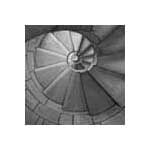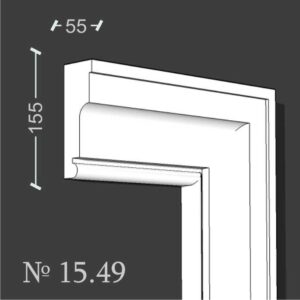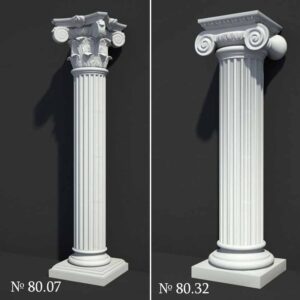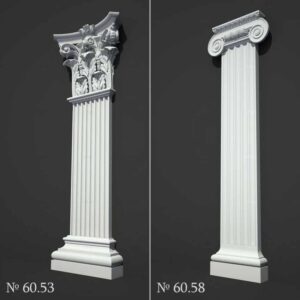A home is more than a shelter, more than a collection of walls and roofs. It’s an artwork, an expression of your individual style and personal taste. Within the vast spectrum of interior design, contemporary home design stands out as a versatile, dynamic, and aesthetically pleasing choice that reflects the ever-changing trends of our times. Let us embark on a journey through the twelve key features of a contemporary home design.



The Minimalistic Elegance of Contemporary Home Design
In the realm of contemporary home design, less is undoubtedly more. Uncluttered, clean spaces form the backbone of this design ethos. Simplified forms and refined functionality come together to create a space that is free of unnecessary distractions. Instead, the focus is on the beauty of simplicity and the elegance of minimalism.
Open layouts, uncomplicated wall finishes, and well-considered furnishings create a sense of fluidity and openness in contemporary homes. Light, both natural and artificial, is used strategically to enhance this feeling of spaciousness.
Integrating minimalism into your contemporary home design doesn’t mean sacrificing comfort. Thoughtfully selected, comfortable furniture can bring warmth and liveliness to these simple spaces.
Lastly, remember that minimalist design doesn’t have to be stark or cold. Subtle colors, textures, and organic elements can soften the overall look and create a welcoming atmosphere in your home.



The Role of Neutral Colors in Contemporary Home Design
The color palette of contemporary home design usually leans towards neutrality. Various shades of brown, taupe, cream, and pure white are commonly used. They form a perfect backdrop for highlighting the key elements and allow for easy changes in accent colors with changing trends.
Splashes of color can be incorporated into the neutral palette through artwork, rugs, cushions, or other accent pieces. These pops of color add an element of surprise and personality to your living spaces.
However, it’s important to remember that balance is key in contemporary home design. The use of color should be carefully controlled, with vibrant tones used sparingly against a neutral backdrop.
Neutral colors also extend to flooring options. Hardwood floors in lighter shades are a popular choice, often combined with simple, geometric patterned rugs for added warmth and texture.


The Impact of Natural Materials in Contemporary Home Design
Contemporary home design embraces the beauty of natural materials. Wood, stone, and leather are commonly used, adding texture and warmth to the modern aesthetic. They bring the outdoors in, establishing a connection between the house and its natural surroundings.
Different types of wood, from sleek bamboo to rich mahogany, can be used in flooring, furniture, or as architectural elements. Stone is often used in countertops, wall treatments, and fireplace surrounds, adding a rugged, earthy feel to the space.
The use of glass in contemporary home design is also significant. Large windows, glass doors, and skylights allow for an abundance of natural light and a seamless integration of indoor and outdoor spaces.
When using natural materials, it’s crucial to respect their inherent beauty. They should be used in their most genuine, least processed form to maintain their authenticity and express their true character.




The Intricacy of Lighting in Contemporary Home Design
In the world of contemporary home design, lighting is not merely a functional element; it’s an essential aspect of the aesthetic. A cleverly designed lighting plan can accentuate architectural details, highlight key pieces of furniture, and create a warm, welcoming atmosphere.
Recessed or track lighting is commonly used in contemporary homes to highlight artwork or architectural elements. These lights can be adjusted to direct attention exactly where it’s wanted, creating visual interest and depth.
Pendant lights and chandeliers in innovative, sculptural designs often act as focal points in a room. They not only provide light but also add an artistic touch to the space.
Lastly, natural light is a crucial part of contemporary home design. Large windows, glass doors, and skylights are used to maximize daylight and connect the indoors with the outdoors.



The Significance of Clean Lines and Geometric Shapes in Contemporary Home Design
Clean lines and geometric shapes are the defining characteristics of contemporary home design. They reflect the modern preference for simplicity, efficiency, and order. Straight lines are seen in architectural details, furniture, and décor items, promoting a sense of harmony and balance in the space.
Structures like open floor plans and high ceilings, which are common in contemporary design, naturally facilitate clean, straight lines and geometric forms. The shapes are not just limited to squares and rectangles, but also include circular and other geometric shapes, which add variety and visual interest.
Remember, in contemporary design, furniture and décor pieces often double as works of art. So choose pieces with striking, geometric designs that stand out while still fitting seamlessly into your home’s overall aesthetic.
Another way to incorporate clean lines and geometric shapes is through patterns. Rugs, cushions, and other textiles featuring simple, geometric patterns can add a touch of sophistication and depth to a contemporary room.


The Incorporation of Technology in Contemporary Home Design
Contemporary home design often incorporates the latest technology. High-tech appliances, home automation systems, and modern audio-visual equipment are seamlessly integrated into the design. This enhances functionality and creates a home environment that is not just aesthetically pleasing, but also convenient and efficient.
When incorporating technology into your contemporary home, remember to keep the design principles of simplicity and functionality in mind. Avoid cluttering spaces with unnecessary gadgets. Instead, opt for sleek, streamlined devices that blend into your home’s aesthetic while providing optimal performance.
Also, consider smart home technologies that allow you to control various aspects of your home, from lighting and temperature to security systems, with the touch of a button or even with voice commands. This fusion of design and technology is what sets contemporary homes apart.


The Emphasis on Eco-Friendliness and Sustainability in Contemporary Home Design
Sustainability is a key consideration in contemporary home design. There’s an emphasis on using eco-friendly materials and integrating green building practices. This includes using renewable materials like bamboo, energy-efficient appliances, and systems for rainwater harvesting or solar energy.
Incorporating green elements into your home goes beyond just the choice of materials and technology. It also extends to the design of the space itself. For example, maximizing natural light not only reduces the need for artificial lighting but also creates a more open and airy feel in the home.
Green roofs, walls covered in plants, and indoor gardens are other ways to incorporate nature into contemporary homes. They not only improve the home’s aesthetic but also have practical benefits like improving air quality and reducing energy costs.
In conclusion, contemporary home design is not just about aesthetics. It’s also about creating a comfortable, sustainable, and efficient living environment.

Conclusion
Contemporary home design goes beyond merely following the latest trends. It represents a thoughtful fusion of aesthetics, functionality, and sustainability. By incorporating these twelve key features, from clean lines and high-tech integration to sustainable practices, you can create a contemporary home that is not only visually stunning but also comfortable, efficient, and environmentally friendly. It’s about creating a home that not only looks good but also feels good to live in.






